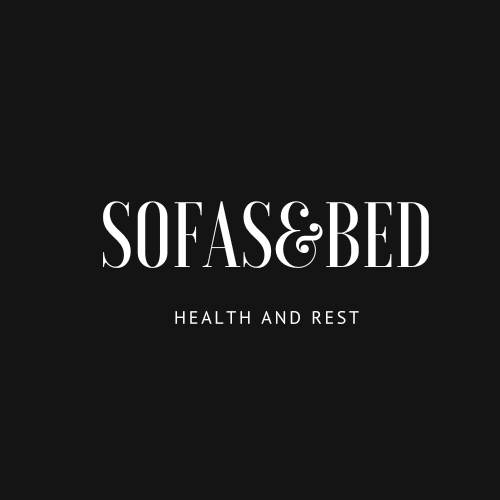How Digital Devices Disrupt Your Sleep Cycle
In today’s hyperconnected world, our relationship with technology has profound implications for our sleep health. Many Americans struggle with poor sleep quality, and research increasingly points to our digital habits as a significant factor. The blue light emitted from screens interferes with melatonin production, the hormone responsible for regulating our sleep-wake cycle.
The Science Behind Blue Light Exposure
Studies from the National Sleep Foundation show that exposure to blue light in the evening can delay the onset of REM sleep by up to 30 minutes. This wavelength of light specifically suppresses melatonin production, signaling to your brain that it’s still daytime even when it’s time to wind down.
Measuring Blue Light Impact
Research has found that just two hours of blue light exposure in the evening can reduce melatonin production by up to 22%. This disruption can significantly impact your ability to fall asleep quickly and maintain quality sleep throughout the night.
Devices with the Highest Blue Light Emissions
Not all devices emit the same amount of blue light. Smartphones and tablets typically emit more blue light per square inch than larger screens like TVs, making them potentially more disruptive when used close to bedtime.
Notification Stress and Sleep Anxiety
Beyond blue light, the constant notifications from our devices create a state of alertness that’s incompatible with quality rest. The anticipation of messages or work emails can trigger the release of stress hormones like cortisol, making it difficult for your mind to relax.
The Dopamine Feedback Loop
Social media and many apps are designed to trigger dopamine releases, creating reward cycles that can be addictive. This neurochemical stimulation can make it challenging to disconnect at night, as your brain continues to crave these small hits of pleasure.
Breaking the Notification Habit
Strategic approaches like turning on “Do Not Disturb” mode two hours before bed can help reduce the psychological arousal caused by notifications. Setting specific times to check messages can also help establish healthier boundaries with your devices.
Content Consumption and Sleep Quality
The type of content we consume before bed also impacts sleep quality. Engaging with work emails, stressful news, or exciting video content can stimulate your mind and make it difficult to transition into a restful state.
The Impact of Binge-Watching
The phenomenon of “just one more episode” has become a common sleep disruptor. Streaming services are designed to keep you engaged, and the resulting delayed bedtimes can lead to chronic sleep deprivation over time.
Choosing Sleep-Friendly Evening Content
Opt for calming, low-stimulation content in the evening hours. Reading a physical book, listening to gentle music, or practicing relaxation techniques can help signal to your brain that it’s time to prepare for sleep.
Practical Solutions for Better Sleep in the Digital Age
Despite the challenges, there are numerous evidence-based strategies to mitigate technology’s negative impact on your sleep. Implementing these approaches can help you reclaim quality rest without completely disconnecting from the digital world.
Creating a Technology Curfew
Establishing a consistent “digital sunset” 1-2 hours before bed can significantly improve sleep quality. This practice allows your brain to naturally begin producing melatonin and prepare for sleep.
Gradual Disconnection Techniques
Rather than abruptly stopping all technology use, try a gradual approach. Begin by disconnecting from work-related technology, then social media, and finally entertainment, allowing your mind to progressively wind down.
Setting Up Device-Free Zones
Designate certain areas of your home, particularly the bedroom, as technology-free zones. This spatial separation can help strengthen the mental association between your bedroom and sleep rather than stimulation and entertainment.
Leveraging Technology for Better Sleep
Ironically, some technological solutions can help mitigate the negative impacts of digital devices. Blue light filters, sleep tracking apps, and smart home automation can work in your favor when used strategically.
Blue Light Filtering Options
Most modern devices offer built-in blue light reduction settings that can be scheduled to activate in the evening hours. Additionally, blue light blocking glasses have shown promise in research for preserving melatonin production when screen use is unavoidable.
Building a Sustainable Sleep Routine in the Digital Era
The key to long-term success lies in creating sustainable habits that acknowledge the reality of our connected lives while prioritizing sleep health. Rather than viewing technology as the enemy, we can learn to use it mindfully.
Weekly Digital Detox Practices
Incorporating regular periods of digital disconnection can help reset your relationship with technology. Even short periods of device-free time can have significant benefits for sleep quality and overall well-being.
Mindful Technology Use
Practicing intentionality with your devices can transform how they impact your sleep. Before reaching for your phone or tablet, pause and ask whether this interaction will support or hinder your rest goals.
Creating Accountability Systems
Sharing your sleep goals with friends or family can help maintain your commitment to healthier technology habits. Some people benefit from using apps that lock certain features after designated hours or track screen time to increase awareness.
Balancing Connectivity and Rest
Finding the right balance between staying connected and protecting your sleep is a personal journey. Experiment with different approaches to discover what works best for your lifestyle and sleep needs.
Adapting to Special Circumstances
During high-stress periods or when on-call for work, complete disconnection may not be possible. In these cases, focus on minimizing exposure through settings adjustments and strategic use of features like priority notifications.
By implementing these strategies consistently, you can enjoy the benefits of our digital world while protecting your precious sleep. Remember that small, sustainable changes often yield better results than dramatic overhauls that prove difficult to maintain. Your relationship with technology should serve your well-being, including your fundamental need for quality rest.
